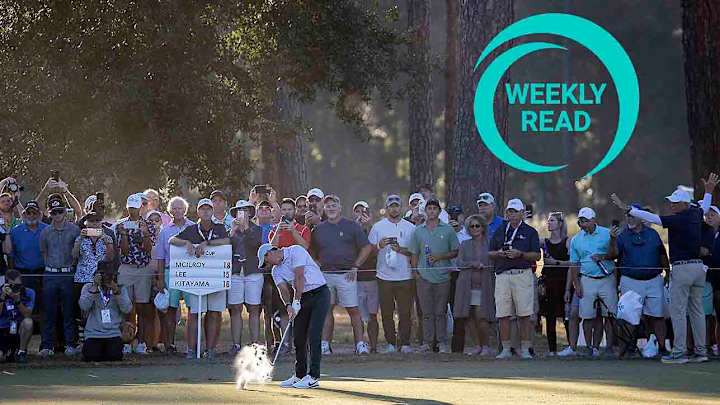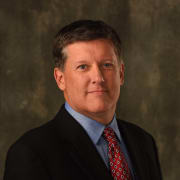The CJ Cup Offers a Look Into Elevated-Event Life on the PGA Tour

More Weekly Read: Rory McIlroy Delivers Again | Watching Freddie Go Low | Fore! Things
The CJ Cup in South Carolina gave us an early taste of what an elevated event on the PGA Tour is going to look like when the concept comes into play in 2023.
The tournament that was displaced from its South Korea home due to the pandemic and landed in Las Vegas for two years before settling at Congaree Golf Club last week attracted 15 of the top 20-ranked players in the world, by far the best showing of any fall event in what is the last wraparound season the PGA Tour will employ.
And it did so organically. Why? It’s funny what a big purse and a no-cut event will do to attract players.
The CJ Cup had a $10.5 million purse and just 78 players, with everyone getting paid. Say what you want about LIV Golf and its small fields and big purses, but it’s impossible to deny that such events attract the top players.
It is the only time they are guaranteed pay, and in the case of the CJ Cup, a top-20 finish meant in excess of $130,000. Rory McIlroy, who won to return to No. 1 in the world for the first time since the summer of 2020, received $1,890,000. Before the World Golf Championship events dwindled from four to one, a majority of players who were eligible showed up.
Guaranteed money is tough to pass up.
Starting in January, there will be 12 elevated events outside of the four majors and the Players Championship. In order to qualify for the year-long Player Impact Program and $100 million worth of bonuses, a player must compete in all of the elevated events—for which he is eligible.
A common example of a contender for the PIP is Rickie Fowler. But he has not—so far—won a tournament in 2022, so he won’t be eligible for the Sentry Tournament of Champions in the first week of January. He can only play in the events for which he is eligible.
Rory McIlroy is a different matter. He will be eligible for them all—and is required to add three other tournaments of his choosing. For all the good this plan encompasses, there are bound to be some unintended consequences.
The PGA Tour announced last week the four new elevated events that are expected to rotate: the WM Phoenix Open, the RBC Heritage, the Wells Fargo Championship and the Travelers Championship. These four events are expected to rotate in future years.
Those four are in addition to the eight previously announced: the Sentry Tournament of Champions, the Genesis Invitational, the Arnold Palmer Invitational, the WGC-Dell Technologies Match Play Championship, the Memorial Tournament, the FedEx St. Jude Championship, the BMW Championship and the Tour Championship.
Five of those events—the Sentry, WGC-Match Play, FedEx St. Jude, BMW and Tour Championship—will be no cut events. The Genesis, Arnold Palmer and Memorial have 120-player fields. There have been rumblings about those three legacy events reducing field sizes and not having a cut starting in 2024, which would be an unfortunate outcome in all of this and play right into the hands of those who support LIV Golf.
The idea of smaller fields and no cuts has been widely panned; having more such events would only add to the angst.
As it is, the FedEx Cup playoff events have all been reduced in size to no-cut events, with only 70 players qualifying for the playoff-opening FedEx St. Jude, with 50 going to the BMW and just 30 to the Tour Championship. Those are good changes.
It puts a premium on qualifying for the playoffs and might actually encourage some to play more. When 2024 rolls around, there will be fewer tournaments in which to qualify. Not only will there be more pressure to play well, but the knowledge that you have less time to make up ground.
But there are some obvious potential pitfalls, some simply inevitable.
For example, starting with the WM Phoenix Open in February, a player who competes in all of the elevated events will play seven of 10 weeks through the RBC Heritage the week after the Masters.
Two of the elevated events—the RBC Heritage and the Travelers—come the week after a major championship. One—the Arnold Palmer—is the week prior to the Players.
And if you were someone like Scottie Scheffler or Jordan Spieth who likes to play his hometown Texas events in Dallas and Fort Worth, you’re looking at playing Wells Fargo, Byron Nelson, PGA Championship, Charles Schwab and the Memorial in consecutive weeks.
It might make some players consider bowing out of contending for the PIP, Scheffler said.
“I think that's going to be a tough balance for guys whether it's a vacation or just time off or whatever it is,’’ Scheffler said prior to the CJ Cup. “That will be a little bit of a tough decision, but I'm sure guys will be willing to give that up. I mean, it's like, 'what's it worth to you to kind of be able to live your life the way you want to live it?'’’
Spieth appears set to take it on.
“It does put me and a few other people like Scottie, (Will) Zalatoris, some guys who like playing both the Dallas events in a situation where you’re looking at five in a row, which I’ve done once,’’ Spieth said. “I don’t particularly like doing more than four in a row, but I love my hometown events. I’ve been playing them really well as well. Just played the Presidents Cup there at Wells Fargo (Quail Hollow).
“So a major in there, Jack’s event (the Memorial). It looks like probably five in a row where I go into Jack’s event on Tuesday night or something like that.’’
There were bound to be these kinds of issues.
The PGA Tour and commissioner Jay Monahan hastily came up with this plan after a players-only meeting during the FedEx Cup playoffs led by Tiger Woods and McIlroy. Monahan announced the new structure at the Tour Championship, with next year’s schedule already announced.
Going forward, there will likely be some changes. Perhaps some dates get shuffled so that other tournaments can become elevated events, thus spreading out the wealth.
The other aspect to keep in mind is that those tournaments that want to be elevated need buy-in from the title sponsor as well as a date that will make it work. The difference in purse is roughly $12 million, it has to come from somewhere, and it won’t all come from the PGA Tour.
